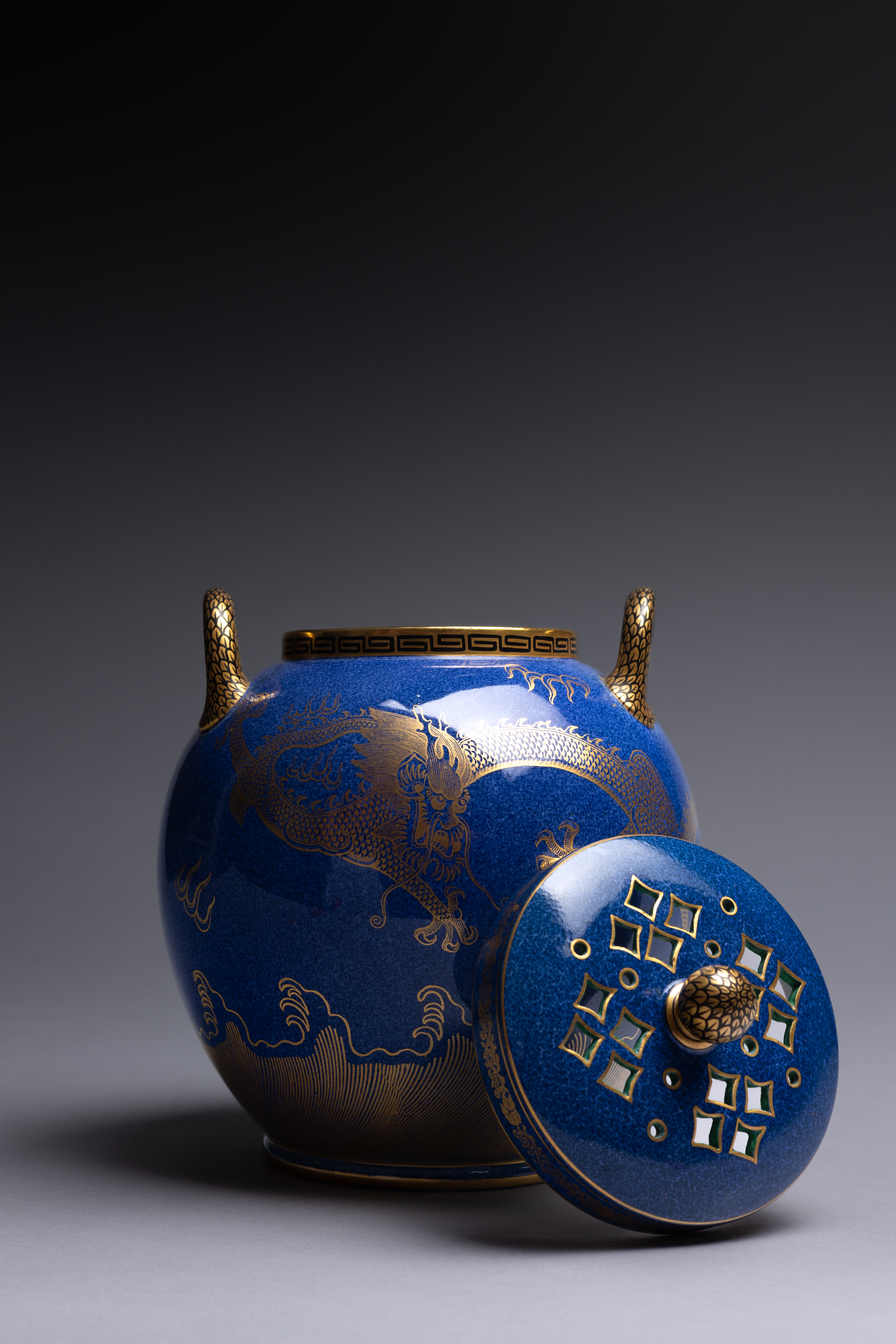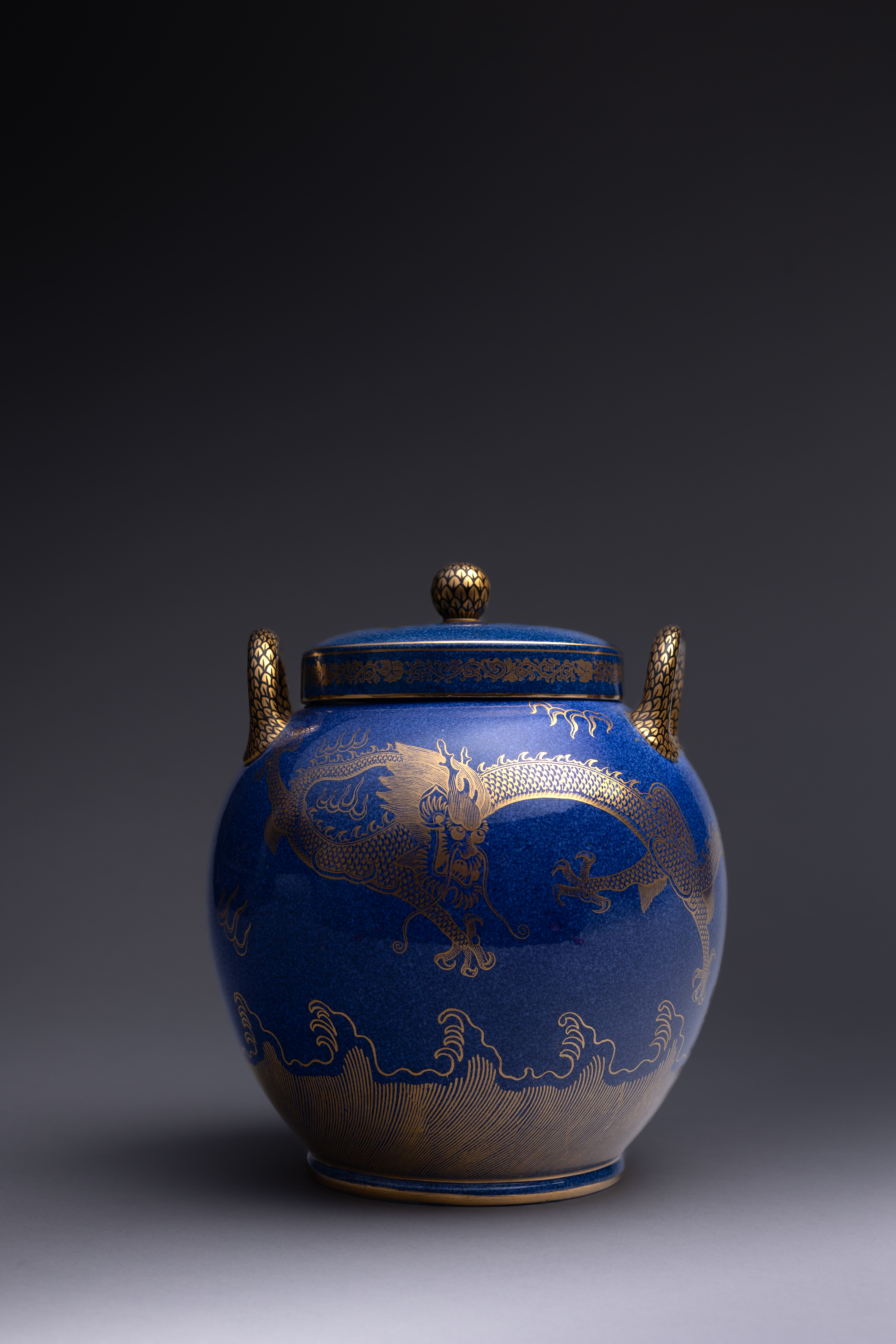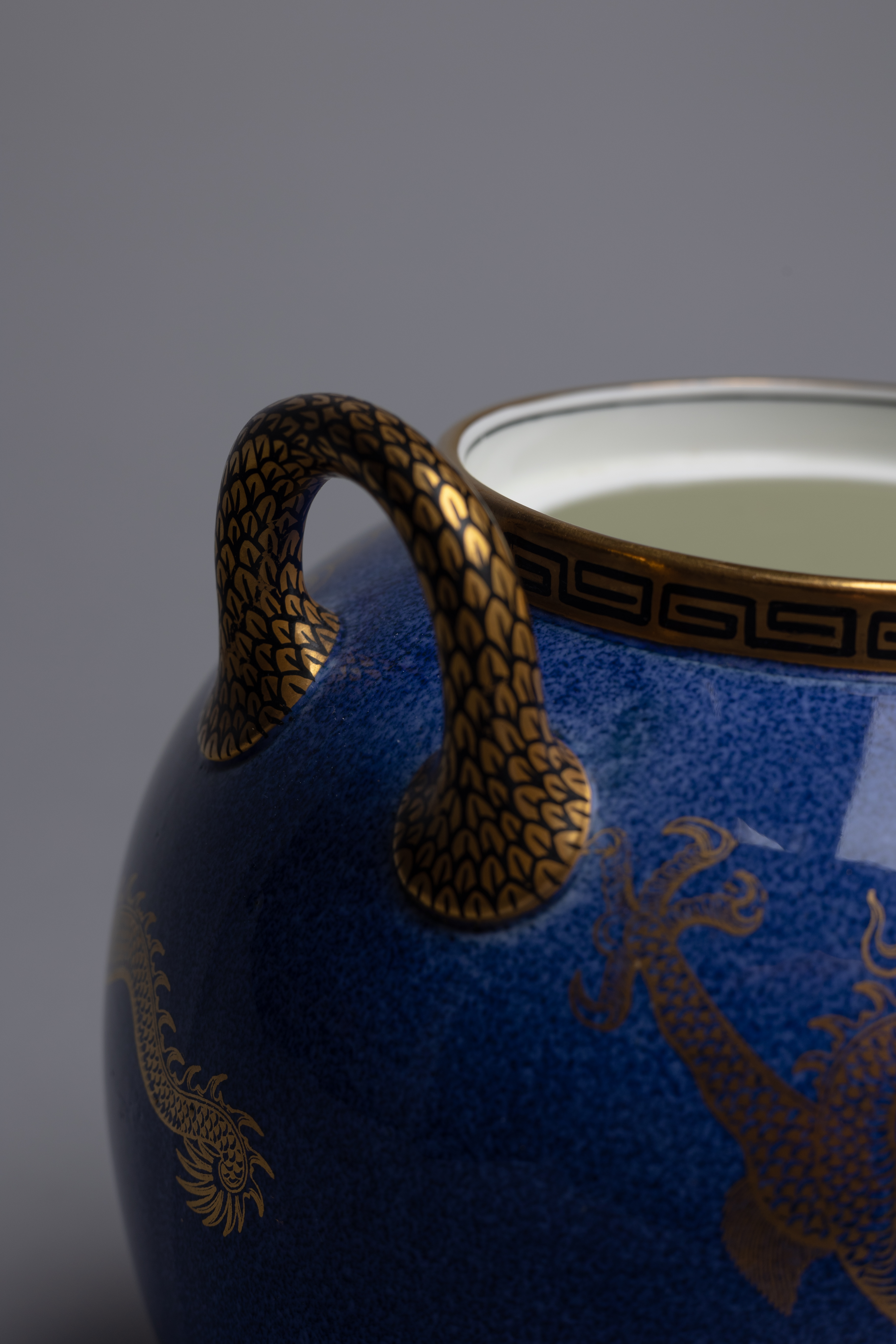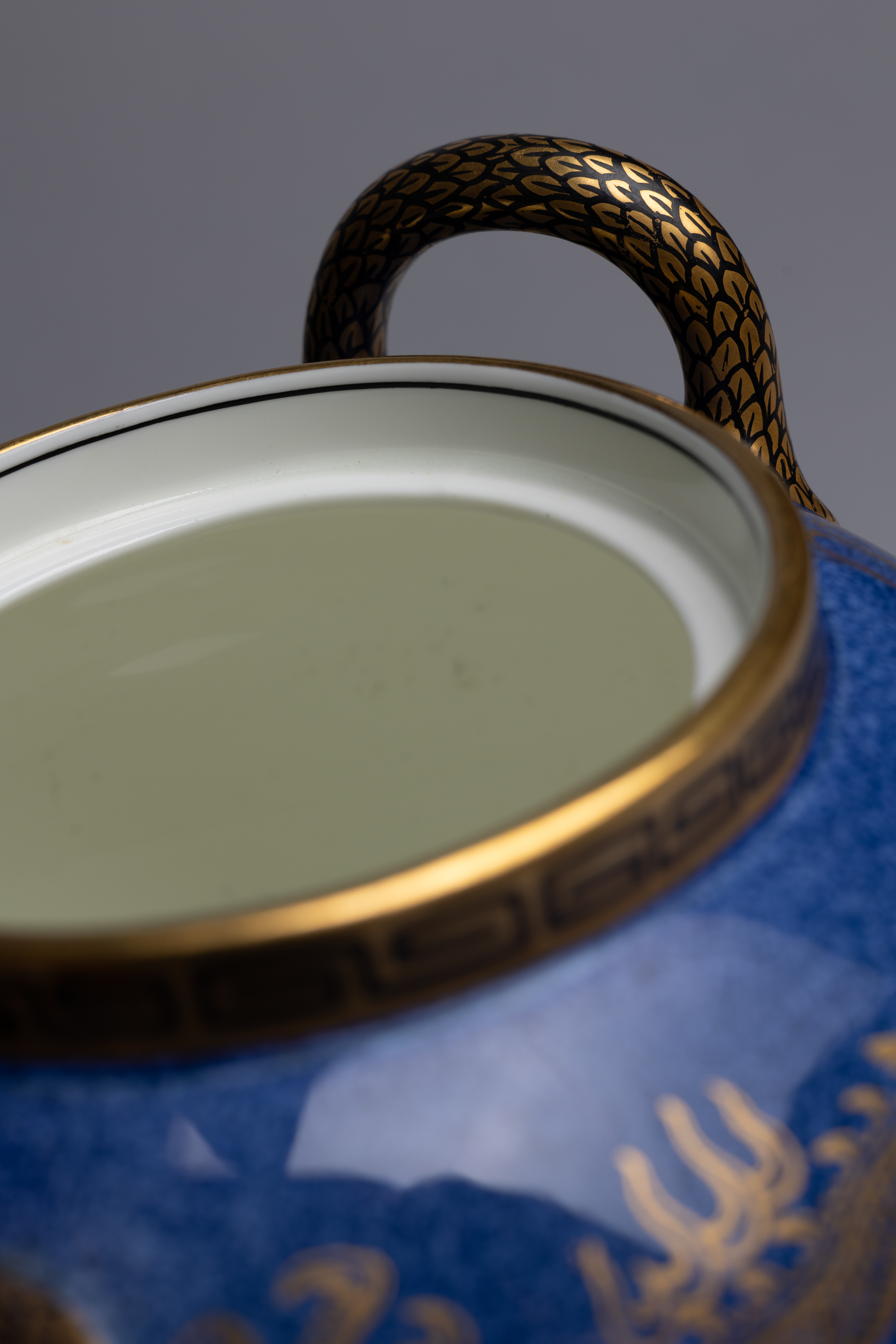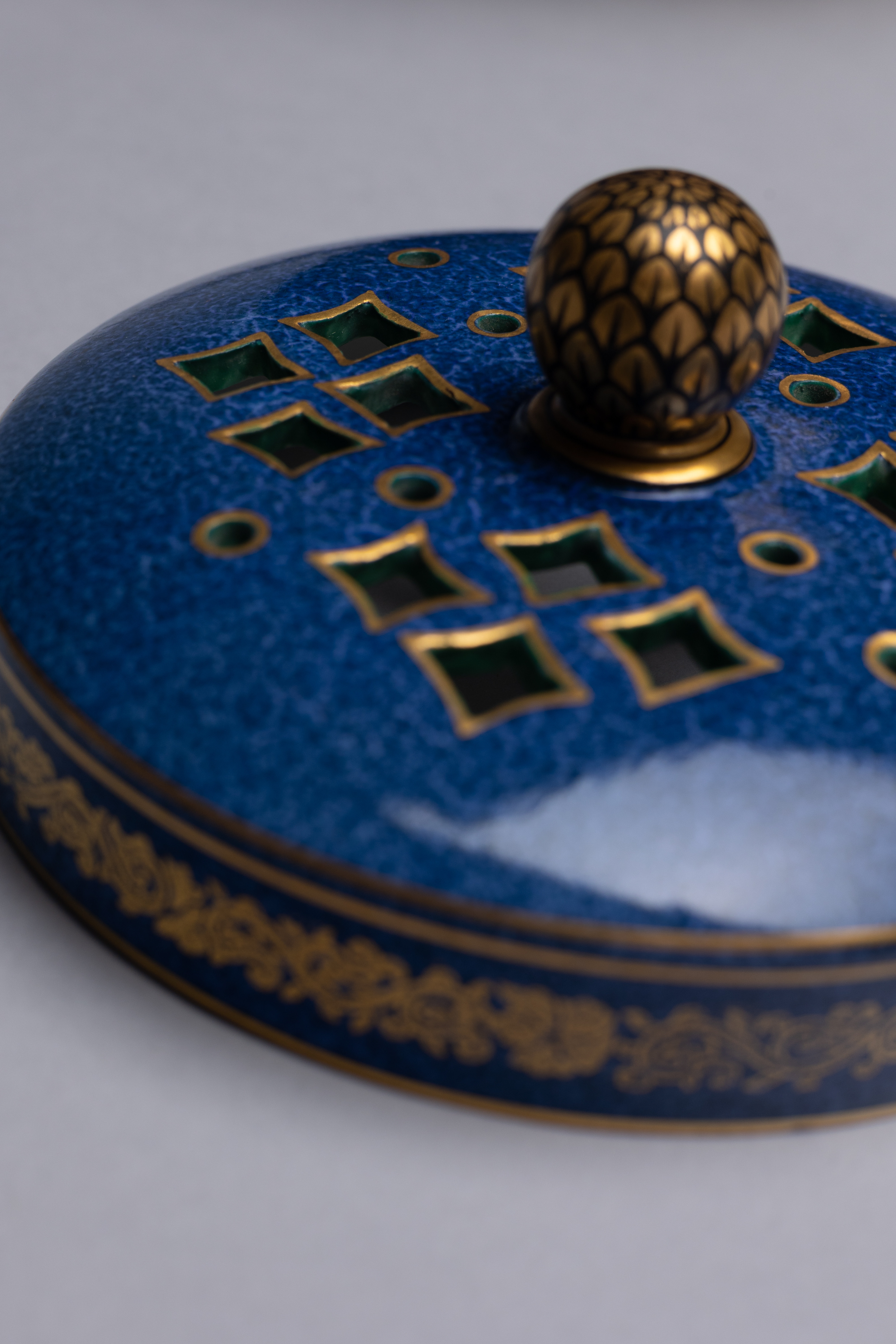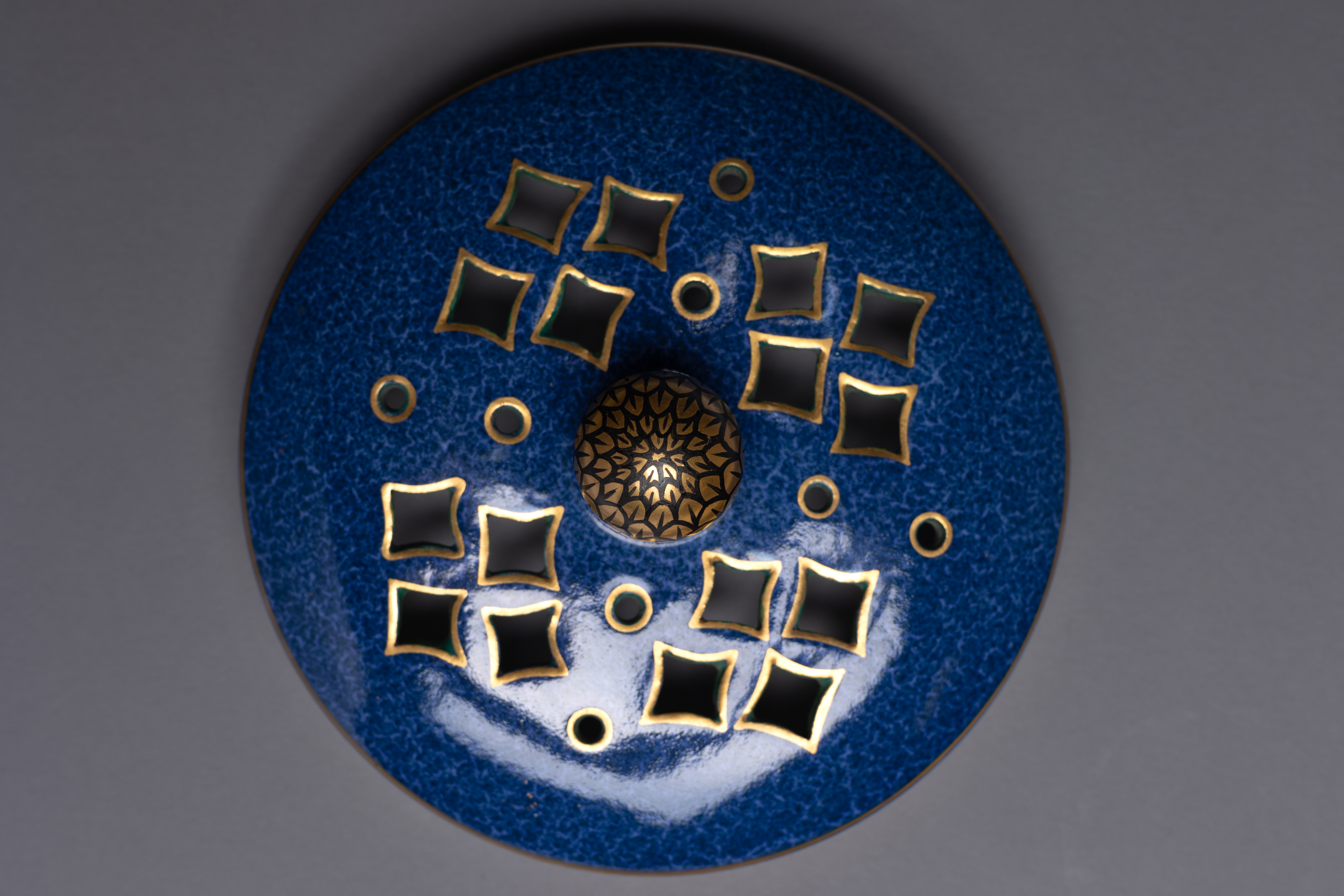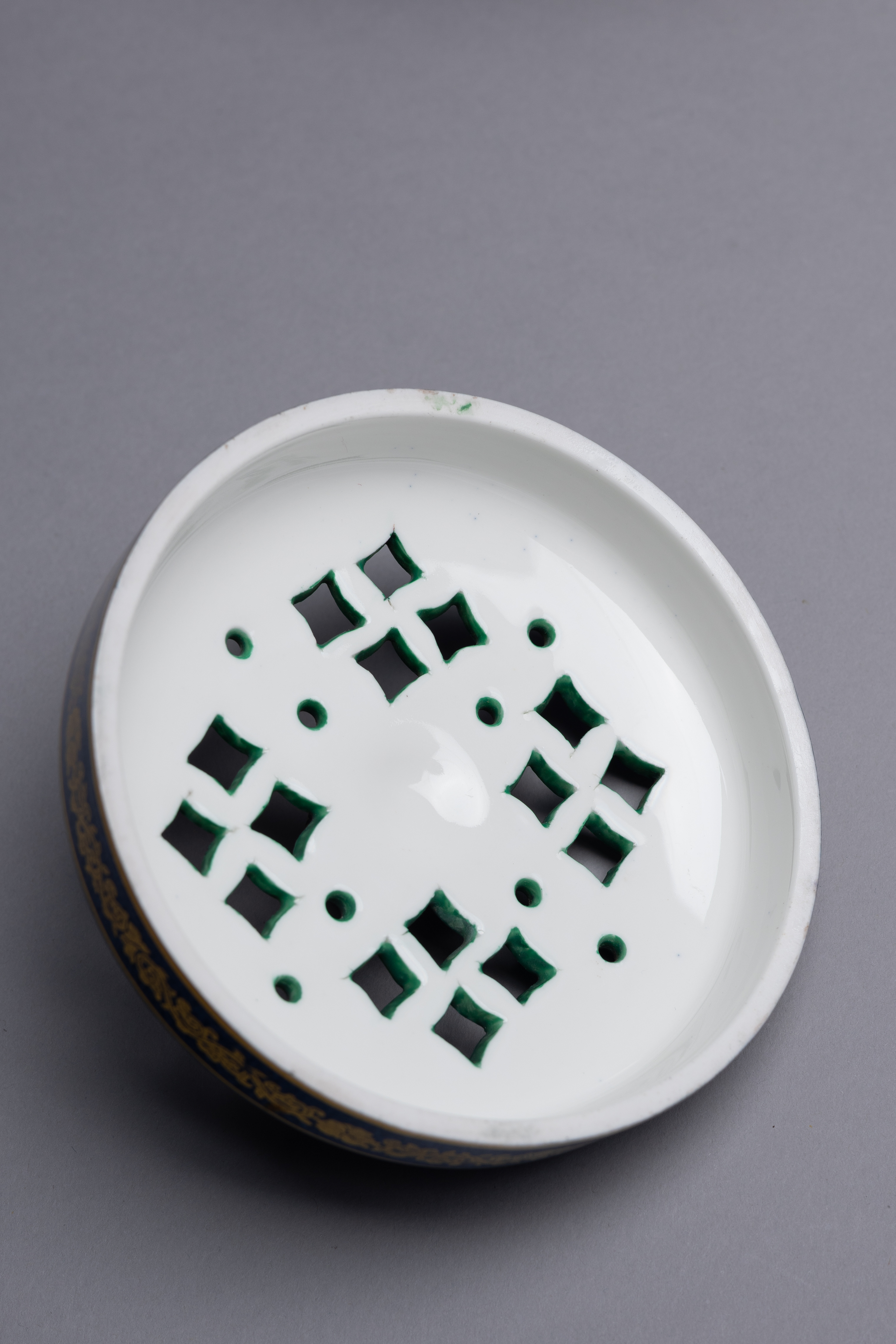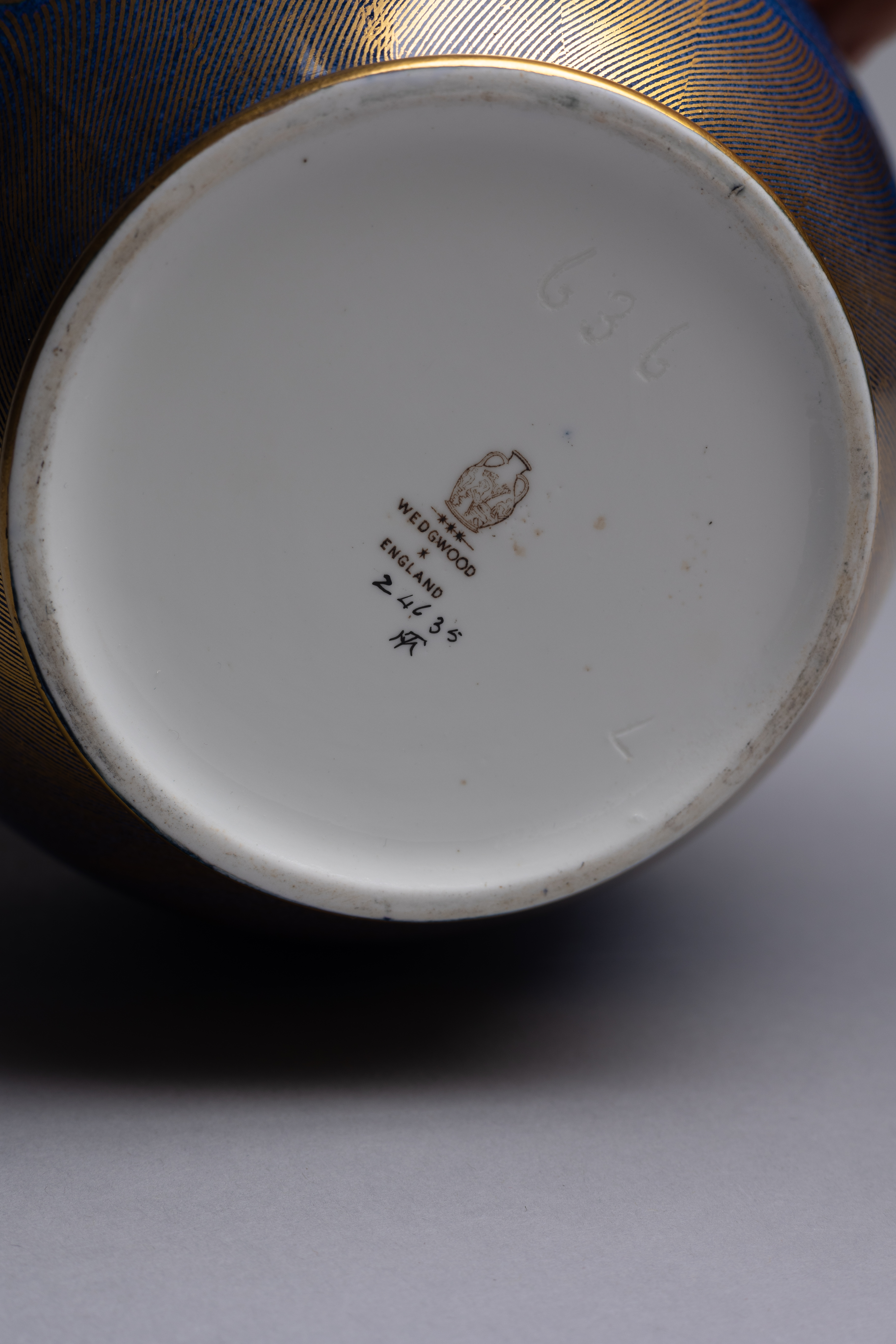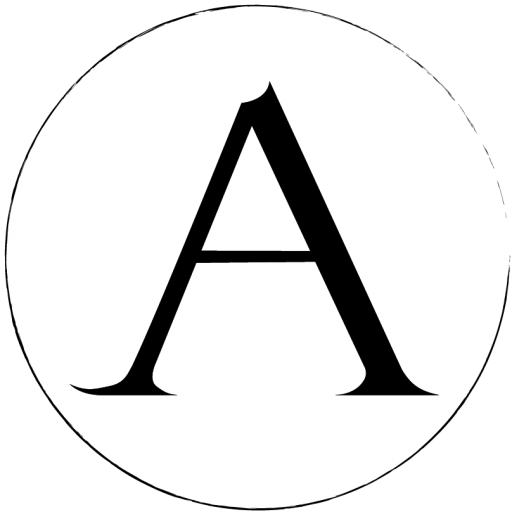This powder blue potpourri is an homage to Daisy Makeig-Jones’s beginnings at Wedgwood. In 1912, during her training, the factory successfully created the stippled blue glazing technique that covers this pot’s surface. Makeig-Jones’s own early dragon designs accent this Wedgwood powder blue jar to create an object of whimsy and mysticism.
This powder blue potpourri is an homage to Daisy Makeig-Jones’s beginnings at Wedgwood. In 1912, during her training, the factory successfully created the stippled blue glazing technique that covers this pot’s surface. Makeig-Jones’s own early dragon designs accent this Wedgwood powder blue jar to create an object of whimsy and mysticism.
Essay
During Daisy Makeig Jones’s training years at Wedgwood, the factory began experimentation to create powder-blue, or bleu soufflé, wares. It took for its model 18th-century Chinese porcelains with a chuiqing (‘blown blue’) glaze and gilded designs. In order to achieve an air-brushed effect, artisans at the Jingdezhen kilns blew powdered cobalt onto unglazed biscuit through a bamboo shoot that had a piece of very thin silk gauze at the end. A second firing secured the powder onto the piece. Chinese powder-blue wares were popular in both the Middle East and in Europe, there reserved for the homes of the upper class.
At Wedgwood, a team of the company’s four leading figures was tasked with recreating the Chinese powder-blue glaze for a middle-class market of consumers. The group, comprised of John Goodwin, James Hodgkiss, George Adams, and Bernard Moore, borrowed an 18th-century Chinese bleu soufflé piece from the Victoria & Albert Museum for thorough research and imitation.
By 1912, the men were able to replicate Chinese bleu soufflé by stippling cobalt on a glazed surface with a sponge; commercial production of powder-blue ware began in August of that year. In a stroke of kismet, Daisy Makeig-Jones’s studio was next to that of James Hodgkiss, one of the lead designers tasked with replicating the Chinese bleu soufflé. Thus she was able to observe first hand many of the experiments to develop Wedgwood powder blue (which came in handy while developing her own Lustre line) and even add some of her own designs to the powder blue wares.
An example can be seen in this potpourri jar. The exterior features the Kangxi tianlong, or ‘Celestial Dragon’, as it was called in the Wedgwood factory, floating above a sea of stylized clouds. Scale-like gilding on the jar’s handles and knob accents the dragon imagery. Accompanying the tianlong are flaming Sacred Pearls, which were believed to grant wishes. Further adding to the jar’s sense of mysticism is its function as a potpourri: one might imagine heavy incense billowing out as invisible clouds of smoke. A Greek-key border around the jar’s opening and a floral border encircling the lid rim lend an eclectic air to this unique piece, which shows Wedgwood’s mastery of the powder blue aesthetic.
Condition
Excellent.
For a detailed condition report, please contact us.
References
Robin Reilly, The Collector’s Wedgwood (Huntington, NY: Portfolio Press, 1980), p. 250 similar shape illustrated.
Una des Fontaines, Wedgwood Fairyland Lustre: the Work of Daisy-Makeig Jones (New York: Born-Hawes, 1975).
During Daisy Makeig Jones’s training years at Wedgwood, the factory began experimentation to create powder-blue, or bleu soufflé, wares. It took for its model 18th-century Chinese porcelains with a chuiqing (‘blown blue’) glaze and gilded designs. In order to achieve an air-brushed effect, artisans at the Jingdezhen kilns blew powdered cobalt onto unglazed biscuit through a bamboo shoot that had a piece of very thin silk gauze at the end. A second firing secured the powder onto the piece. Chinese powder-blue wares were popular in both the Middle East and in Europe, there reserved for the homes of the upper class.
At Wedgwood, a team of the company’s four leading figures was tasked with recreating the Chinese powder-blue glaze for a middle-class market of consumers. The group, comprised of John Goodwin, James Hodgkiss, George Adams, and Bernard Moore, borrowed an 18th-century Chinese bleu soufflé piece from the Victoria & Albert Museum for thorough research and imitation.
By 1912, the men were able to replicate Chinese bleu soufflé by stippling cobalt on a glazed surface with a sponge; commercial production of powder-blue ware began in August of that year. In a stroke of kismet, Daisy Makeig-Jones’s studio was next to that of James Hodgkiss, one of the lead designers tasked with replicating the Chinese bleu soufflé. Thus she was able to observe first hand many of the experiments to develop Wedgwood powder blue (which came in handy while developing her own Lustre line) and even add some of her own designs to the powder blue wares.
An example can be seen in this potpourri jar. The exterior features the Kangxi tianlong, or ‘Celestial Dragon’, as it was called in the Wedgwood factory, floating above a sea of stylized clouds. Scale-like gilding on the jar’s handles and knob accents the dragon imagery. Accompanying the tianlong are flaming Sacred Pearls, which were believed to grant wishes. Further adding to the jar’s sense of mysticism is its function as a potpourri: one might imagine heavy incense billowing out as invisible clouds of smoke. A Greek-key border around the jar’s opening and a floral border encircling the lid rim lend an eclectic air to this unique piece, which shows Wedgwood’s mastery of the powder blue aesthetic.
Excellent.
For a detailed condition report, please contact us.
Robin Reilly, The Collector’s Wedgwood (Huntington, NY: Portfolio Press, 1980), p. 250 similar shape illustrated.
Una des Fontaines, Wedgwood Fairyland Lustre: the Work of Daisy-Makeig Jones (New York: Born-Hawes, 1975).
This item ships free to the continental US, and globally for a flat-rate fee of $100.
All objects are packed with utmost care by our team of expert fine art shippers. All items are shipped with parcel insurance.
For more information on our shipping policies, please visit our FAQ Page.

